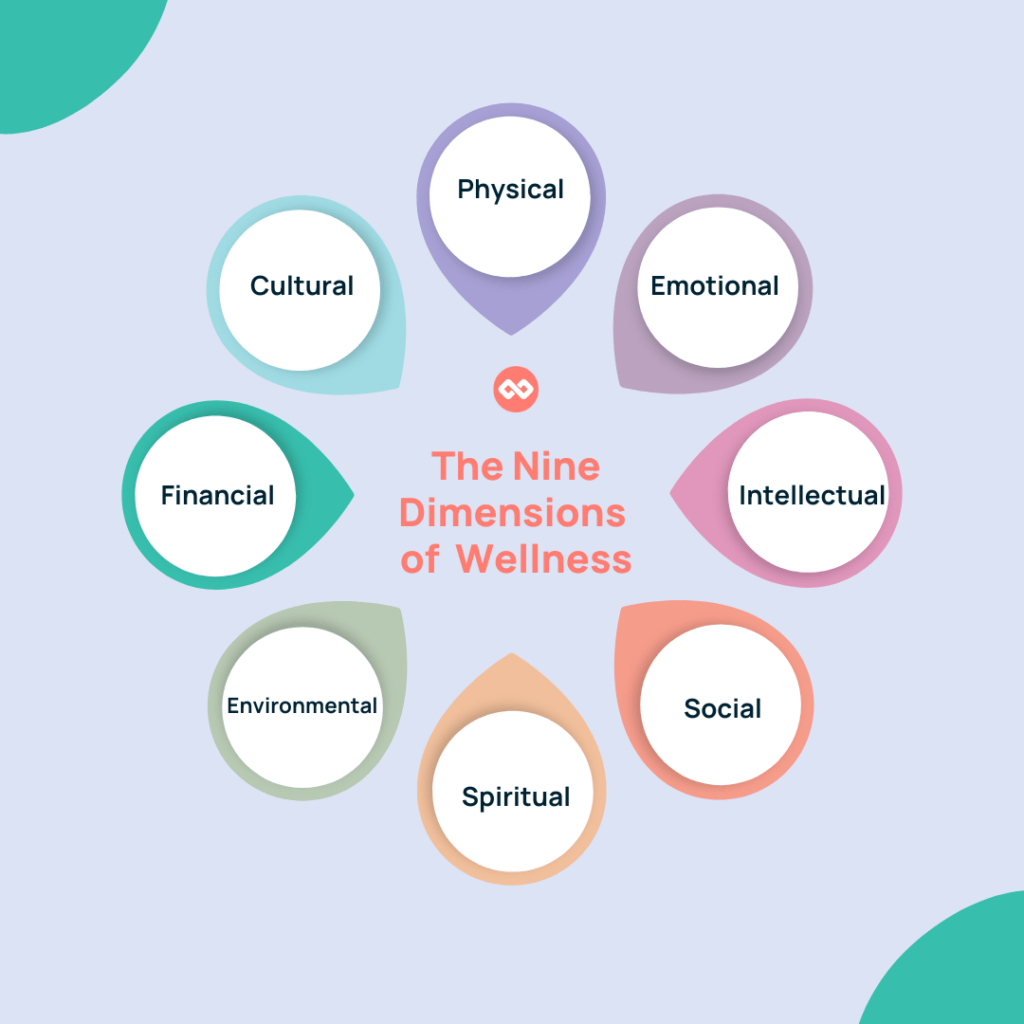In today’s competitive business environment, promoting occupational wellness is essential to the success of an organization. This article will explore the concept of occupational wellness, its relevance to employee wellbeing, the nine dimensions of wellness, and how to implement effective wellness programs in your workplace. Learn about strategies for encouraging wellness, including mentoring programs, and discover the top signs of occupational wellness in your organization. Let’s get started!
What is Occupational Wellness?
Occupational wellness refers to the overall health and satisfaction of employees in their work environment, encompassing their physical, mental, and emotional wellbeing. Achieving occupational wellness means creating a positive workplace environment that supports employees’ personal and professional growth by providing opportunities for skill development, career advancement, and a healthy work-life balance.
One of the key factors in promoting occupational wellness is providing a safe and healthy work environment. This includes ensuring that employees have access to ergonomic workstations and equipment, as well as providing training on proper lifting techniques and other injury prevention measures. Some employers encourage physical wellness by offering on-site fitness classes or gym memberships, or promoting healthy eating habits through the provision of healthy snacks and meals.
Mental wellness is also an important aspect of occupational wellness. Employers can support their employees’ mental health by providing access to mental health resources, such as counseling services or employee assistance programs. Additionally, promoting work-life balance through flexible work arrangements and time off policies can help employees manage stress and avoid burnout.
Promoting occupational wellness can lead to increased employee engagement, productivity, and job satisfaction, ultimately leading to better overall organizational performance. When employees are content and feel valued at work, they tend to be more motivated, take fewer sick days, and remain loyal to the company, reducing turnover rates and training costs.
Investing in occupational wellness is not only beneficial for employees, but for employers as well. By creating a positive work environment that supports the wellbeing of its employees, organizations can attract and retain top talent, and foster a culture of innovation and creativity.
What is the Difference Between Occupational Wellness and Employee Wellbeing?
Occupational wellness and employee wellbeing are two concepts that are closely related, but they differ in scope and focus. While both concepts are essential for creating a healthy and productive workforce, it is important to understand the differences between them.
Occupational Wellness
Occupational wellness is a term used to describe the overall health and wellbeing of employees in the workplace. It encompasses a range of factors, including job satisfaction, work-life balance, career development, and workplace culture. Occupational wellness is focused specifically on the work environment and the personal and professional growth of employees.
When employees have high levels of occupational wellness, they are more likely to feel engaged, motivated, and productive at work. They are also more likely to experience job satisfaction and have a positive outlook on their career and future prospects.
Employee Wellbeing
Employee wellbeing is a broader concept that encompasses a range of factors that influence an individual’s overall happiness and satisfaction with their lives, both inside and outside of the workplace. These factors include physical, emotional, financial, and social wellbeing.
Physical wellbeing refers to an individual’s physical health and fitness, including exercise, nutrition, and sleep. Emotional wellbeing refers to an individual’s mental health and emotional state, including their ability to manage stress, anxiety, and other emotional challenges. Financial wellbeing refers to an individual’s financial security and stability, including their ability to manage debt, save for the future, and plan for retirement. Social wellbeing refers to an individual’s relationships with others, including their family, friends, and colleagues.
The Importance of Occupational Wellness and Employee Wellbeing
Both occupational wellness and employee wellbeing are critical for creating a healthy and productive workforce. When employees are healthy, happy, and engaged, they are more likely to be productive, creative, and innovative. They are also more likely to stay with their employer for longer periods, reducing turnover and increasing organizational stability.
By prioritizing occupational wellness and employee wellbeing, employers can create a rewarding organizational culture that fosters happy, healthy, and productive employees. This can lead to increased job satisfaction, employee engagement, and overall organizational success.
So, while occupational wellness focuses specifically on the work environment and the personal and professional growth of employees, employee wellbeing encompasses a broader range of factors that influence an individual’s overall happiness and satisfaction with their lives. Both concepts are important for creating a healthy and productive workforce, and employers should prioritize both to ensure the success of their organization.

Exploring the Nine Dimensions of Wellness
The nine dimensions of wellness encompass various aspects of an individual’s life that contribute to their overall wellbeing. Recognizing and addressing these dimensions can help organizations create a comprehensive wellness program that supports employees’ diverse needs. The nine dimensions of wellness include:
- Physical wellness: Encourage regular exercise, proper nutrition, and adequate sleep.
- Emotional or Mental wellness: Provide a supportive work environment where employees feel heard and valued.
- Intellectual wellness: Offer opportunities for skill development and continuous learning.
- Social wellness: Cultivate strong relationships and positive communication among coworkers.
- Spiritual wellness: Encourage employees to engage in activities that align with their personal beliefs and values.
- Environmental wellness: Maintain a safe, clean, and sustainable work environment.
- Financial wellness: Assist employees in managing their financial resources and provide resources for financial planning.
- Occupational wellness: Create a positive work environment with growth opportunities and work-life balance.
- Cultural wellness: Creating space to acknowledge and appreciate the diversity of our workplaces and respecting each individual irrespective of religion, gender, race, age, sexual orientation etc.
By addressing each of these dimensions, your organization can create a well-rounded wellness program that supports the multifaceted needs of your employees and fosters a happier, more productive workplace.

Implementing Occupational Wellness Programs in the Workplace
Introducing occupational wellness programs begins with assessing the needs of your employees and evaluating the strengths and weaknesses of your existing workplace environment. Start by collecting feedback from employees through surveys, focus groups, or one-on-one meetings to understand their concerns and priorities. This information will help you craft tailored programs that address their specific needs.
Next, review your organization’s current policies and practices to identify areas that could be improved to better promote occupational wellness. Consider implementing initiatives such as flexible work schedules, professional development opportunities, and employee recognition programs that show appreciation for their hard work and dedication. Cross-functional teams can ensure that wellness initiatives are well-received and well-integrated into the company culture.
Strategies for Encouraging Workplace Wellness
Encouraging workplace wellness requires deliberate efforts from both management and employees. Here are some strategies you can use to promote a culture of wellness in your organization:
- Organize regular wellness activities, such as group workouts or mindfulness sessions, to promote physical and mental wellbeing.
- Promote open and honest communication, addressing concerns and providing a safe space for employees to express their feelings.
- Provide opportunities for employees to acquire new skills through workshops, training, and access to online resources.
- Encourage social interactions and team building through events and gatherings, both inside and outside the workplace.
- Set an example by demonstrating a commitment to wellness and work-life balance, both at the management and employee level.
Remember that it is essential to establish an ongoing dialogue with your employees and continually adapt your wellness initiatives based on their feedback to ensure your programs remain relevant and effective.
Top Signs Your Organization Has Occupational Wellness
An organization with strong occupational wellness demonstrates several key signs, including:
- High levels of employee satisfaction and engagement, with employees taking an active interest in their work and the company’s success.
- Low turnover rates, indicating that employees are content in their roles and committed to the organization.
- Fewer instances of burnout and instances of employees taking extended leaves of absence due to stress or other health issues.
- A strong sense of camaraderie, with employees supporting and collaborating with one another toward shared goals.
- Open communication channels, with employees feeling comfortable expressing their thoughts, ideas, and concerns.
If your organization demonstrates these qualities, it suggests that you have successfully promoted occupational wellness within the workplace. Keep up the good work!
Educating Employees on Occupational Wellness Benefits
To ensure the success of your occupational wellness initiatives, it is essential to educate your employees on the benefits of these programs. Effective communication can increase buy-in and engagement with wellness programs, as employees understand how their participation contributes to their overall wellbeing.
Provide resources and training sessions that clearly outline the benefits of occupational wellness for both individual employees and the organization as a whole. Explain how various wellness initiatives can lead to increased job satisfaction, improved physical and mental health, and stronger coworker relationships. By emphasizing the value of your wellness programs, you can encourage employees to make the most of these offerings and foster a healthier, happier workplace.
Developing a Comprehensive Wellness Program for Your Organization
Creating a comprehensive wellness program requires a strategic approach that considers the unique needs and priorities of your employees. Begin by assessing the overall wellbeing of your employees and identifying areas for improvement. Incorporate a range of wellness initiatives addressing each of the eight dimensions of wellness, and ensure that your programs remain flexible and adaptive to employees’ needs over time.
Regularly evaluate the effectiveness of your wellness initiatives by measuring key performance indicators, such as employee satisfaction, engagement, and retention. Take the time to collect and analyze employee feedback to identify areas for further improvement, and celebrate your successes along the way.
How a Mentoring Program Contributes to Occupational Wellness
Mentoring programs can be a valuable addition to a comprehensive occupational wellness strategy, as they provide employees with opportunities to learn, grow, and foster strong professional relationships. By matching employees with experienced mentors, you can facilitate knowledge exchange, increase employee engagement, and help individuals build their professional networks.
Implementing a mentoring program requires a thoughtful approach to pairing mentors and mentees based on shared interests, goals, or expertise. Offer training and resources to help mentors and mentees make the most of their relationships, and provide opportunities for regular check-ins and feedback to ensure the longevity and success of the program. And if you’re using Mentorloop, you’re already 5 steps ahead!
Promoting occupational wellness within your organization is a worthwhile investment that can lead to happier, healthier, and more productive employees. By focusing on each of the eight dimensions of wellness, implementing targeted programs, and fostering a culture of wellness, you can create a thriving workplace that supports employees’ personal and professional success.




